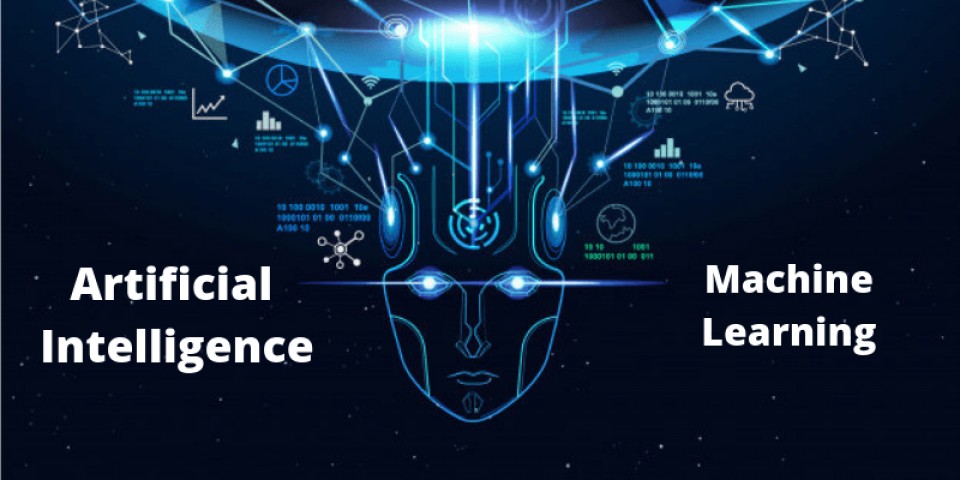
AI vs ML : How Artificial intelligence and machine learning differ?
Artificial intelligence and machine learning are two aspects of computer science that are interrelated. These two technologies are the most popular when it comes to developing intelligent systems.
Despite the fact that these are two related technologies that are sometimes used interchangeably, they are nonetheless two distinct names in some situations.
On a broad level, we can distinguish AI and ML as follows:
“AI is a bigger concept to create intelligent machines that can simulate human thinking capability and behavior, whereas, machine learning is an application or subset of AI that allows machines to learn from data without being programmed explicitly.”
What is Artificial Intelligence?
Artificial intelligence is a branch of computer science that aims to create a computer system that can think like a human. It is made from of the words “artificial” and “intelligence,” which together signify “human-made thinking ability.” As a result, we can define it as,
Artificial intelligence is a technology using which we can create intelligent systems that can simulate human intelligence.
Artificial intelligence can think, reason, learn from experience, and, most crucially, make its own judgments, all of which require human intelligence.
“Artificial intelligence (AI) is the science and engineering of creating intelligent machines.”
— McCarthy, John
Artificial intelligence can do a lot of things, but it hasn’t yet mastered the capacity to communicate with people on an emotional level.
Let’s look at some examples of artificial intelligence in action to learn more about it.

Robotics:
A good example of AI is an industrial robot. To avoid costly downtime, industrial robots can check their own accuracy and performance and sense or detect when repair is required. It can also act in a new or unfamiliar setting.
Personal Assistants:
Personal assistant tools, which are Human-AI interaction gadgets, are another kind of AI. Google Home, Apple’s Siri, Amazon’s Alexa, and Microsoft’s Cortana are the most popular personal assistants.
Users can use these personal assistants to look up information, book hotels, add events to calendars, answer queries, plan meetings, and send messages or emails, among other things.
What is Machine Learning?
Machine learning, or ML, is a subset of artificial intelligence that can learn from data without being explicitly programmed or aided by domain knowledge.
In machine learning, learning refers to a machine’s ability to learn from data, as well as an ML algorithm’s ability to train a model, assess its performance or accuracy, and then generate predictions.
For example, supervised machine learning techniques like Random Forest and Decision Trees can be used to train a system.
“The branch of study known as machine learning is concerned with giving computers the ability to learn without being explicitly programmed.”
— Samuel Arthur
The goal of machine learning is to allow machines to learn from their own data and make accurate predictions.
Let’s look at some Machine Learning examples to learn more.
Recommendations for Products
Machine learning tools are available on most e-commerce platforms, and they provide product recommendations based on previous data.
For example, if you search for machine learning books on Amazon and then purchase one, when you return after a set length of time, Amazon’s home page will display a list of machine learning books.
It also provides suggestions based on what you’ve liked, what you’ve placed to your cart, and other similar actions.
ARTIFICIAL INTELLIGENCE vs MACHINE LEARNING
| Artificial Intelligence | Machine Learning |
| Artificial intelligence (AI) is a technology that allows machines to mimic human behavior. | Machine learning is a subset of artificial intelligence that allows a machine to learn from prior data without having to design it explicitly. |
| The goal of AI is to create a clever computer system that can solve complicated problems in the same way that people can. | The purpose of machine learning is to allow machines to learn from data and produce reliable results. |
| In AI, we create intelligent computers that can execute any task in the same way that a human can. | In machine learning, we use data to train machines how to do a task and produce reliable results. |
| Machine learning and deep learning are the two main subsets of AI. | Deep learning is a main subset of machine learning. |
| AI offers a wide range of applications. | Machine learning is limited in its use. |
| AI is attempting to develop an intelligent system capable of performing a variety of complex tasks. | Machine learning aims to construct machines that can only accomplish the tasks for which they have been programmed. |
| The main applications of AI are Siri, customer support using catboats, Expert System, Online game playing, intelligent humanoid robot, etc. | Machine learning is used in a variety of ways, including online recommender systems, Google search algorithms, and Facebook auto friend tagging suggestions, among others. |
| Learning, thinking, and self-correction are all part of it. | When presented with new data, it incorporates learning and self-correction. |
| Structured, semi-structured, and unstructured data are all dealt with by AI. | Machine learning is concerned with Data that is structured and semi-structured. |
